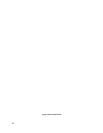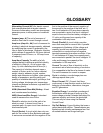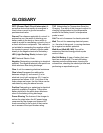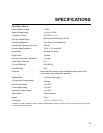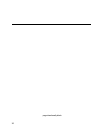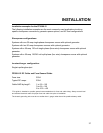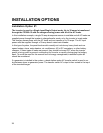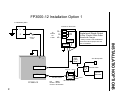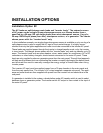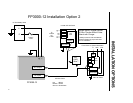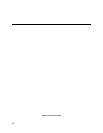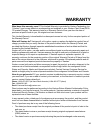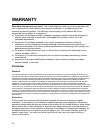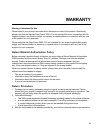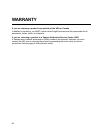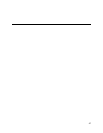
40
Installation Option #2
The AC loads are split between main loads and “inverter loads.” The external sources
of AC power can be a single 30-amp shorepower source or a 30-amp breaker from a
panel fed by a 50-amp 120 volt single phase (three wire) shorepower source, 1 leg of a
50-amp 120/240 split phase (four wire) shorepower source, or a generator. The charter
shares power with the “inverter loads” only.
In this installation example, one single-phase shorepower source is available or only one leg of a
split-phase source is used to supply the AC input of the inverter/charger. It is highly recom-
mended that only the lighter appliance and outlet circuits be connected to the inverter AC panel.
These loads are supplied power through the inverter in charge/transfer mode, or by the inverter
in invert mode. The charger shares power with the “inverter loads” only and can transfer up to 30
amps. The heavier loads such as space heaters, stove, water heater, air conditioners, AC to DC
converters, or other battery chargers, should remain connected to the main AC panel. These
loads are only supplied by shore or generator power from the main panel. This split load approach
will help avoid problems such as overloading the inverter or rapidly discharging the battery bank,
and eliminate the need to manually manage the energy usage of these loads when using
inverter power.
The inverter AC input must be supplied power from a 30-amp breaker in the main panel and
from the main neutral bus. The inverter’s AC output supplies a separate sub panel. The appli-
ance and outlet loads are then supplied with power from the inverter hot and neutral bus in the
sub panel.
If a generator is installed in the system, a break-before-make AC transfer switch is used to select
between shore or generator power. The transfer switch AC output is then routed to the input of
the main AC panel.
INSTALLATION OPTIONS



